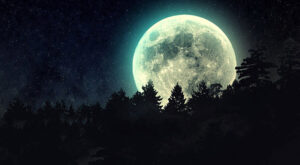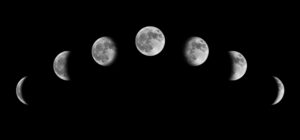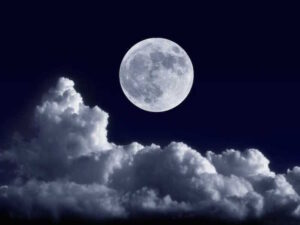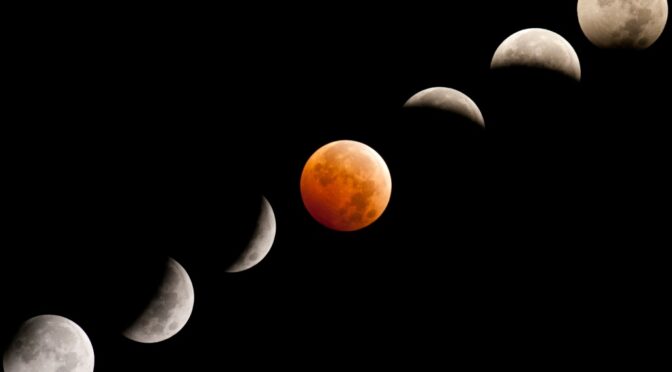Did you know each full moon has a name? I actually didn’t know that before this! I had heard of the harvest moon but that was all! The native americans named each full moon to help them track the seasons. It was a representation of a time of year and the energies that came with it.
Although the early native americans did not record time the way we do, using the Gregorian calendar. They watched the skies, trees and stars and observed a change over time. Some tribes had 4 seasons, some had 5 based on what they experienced. Sometimes there was 13 months in a year because of the variation in lunar cycles, leap years and so on.
The names for each moon apply to the entire month.
January, known as the Full Wolf Moon was named after it appeared when wolves would howl outside of the villages. It was also known as the Old Moon to some tribes.
February is known as the Full Snow Moon, because that month typically has the heaviest snow fall of the year. Other tribes had named this moon the ‘Hunger’ Moon because it was the most difficult to hunt for food in this season.
March is called Full Worm Moon, because it is the beginning of spring! It is when everything comes alive again; things start growing, birds and bugs come out, especially worms. It was named after the representation of rebirth of nature. Also known as the Sap Moon because of the maple trees sprout once again.
April is the Full Pink Moon. Slightly more abstract, this moon is named after the appearance flowers as spring continues on. Also known as the Egg or Fish Moon, it all represents the birth, sprouting and life of a new cycle.
May is called Full Flower, or Milk Moon. As spring brings new plants, flora and life forth, the tribes named this month after the continuation of growth from mother Earth.

June is the Full Strawberry Moon. You could probably guess why; this is the best time for picking strawberries! Tribes would go out at this time of year specifically looking for rice strawberries in the wild. It is also known as the Rose Moon by some.
July is known as the Full Buck Moon. This is the time when bucks will grow new antlers! This month was also known as the Thunder Moon, because of all the storms that would take place during this month!
August is the Full Sturgeon Moon. A sturgeon is the common name for 27 different species of fish! This is the best time for this kind of fish to be caught in the great lakes as it was when they were most bountiful.
September is named the Full Corn Moon. Also known as the Barley Moon and sometimes the Harvest Moon, but that moon is the full moon nearest the autumnal equinox which can be in either September or October. It’s named that because it’s so bright that it allows you to keep working into the night to ensure you’re ready for the harvest!

October is the Full Hunters Moon. This one is a bit ominous; because the leaves are falling from the trees, its the perfect time for hunters to lay traps, see birds in the trees and animals more clearly.
In November, both colonists and native americans would put down beaver traps around this time before the swamps and rivers completely froze over.
So of course, it is named the Full Beaver Moon! This moon was also known as the Frost Moon as the cold really started to roll in.
December is the Full Cold Moon; as winter fully sets in. Also known as the Long Nights Moon, it is the representation of the wintry season!
Here are all the full moons happening in 2016!
| Date | Name | U.S. East | UTC |
| Jan. 23 | Wolf Moon | 8:46 p.m. | 01:46 (1/24) |
| Feb. 22 | Snow Moon | 1:20 p.m. | 18:20 |
| Mar. 23 | Worm Moon | 8:01 a.m. | 12:01 |
| Apr. 22 | Pink Moon | 1:24 a.m. | 05:24 |
| May 21 | Flower Moon | 5:15 p.m. | 21:15 |
| June 20 | Strawberry Moon | 7:02 a.m. | 11:02 |
| July 19 | Buck Moon | 6:57 p.m. | 22:57 |
| Aug. 18 | Sturgeon Moon | 5:27 a.m. | 09:27 |
| Sept. 16 | Harvest Moon | 3:05 p.m. | 19:05 |
| Oct. 16 | Hunter’s Moon | 12:23 a.m. | 04:23 |
| Nov. 14 | Beaver Moon | 8:52 a.m. | 13:52 |
| Dec. 13 | Cold Moon | 7:05 p.m. | 00:05 (12/14) |

